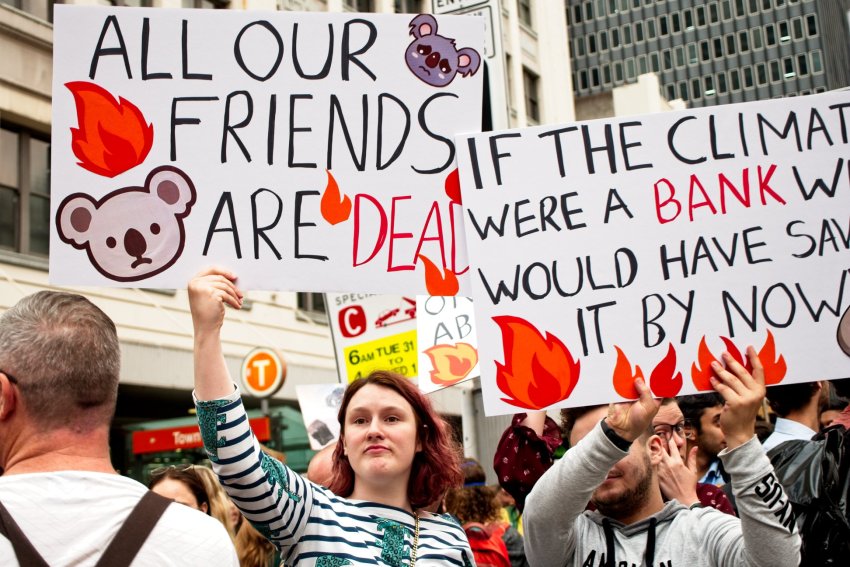
The national bushfire royal commission started its public hearings on May 25. To the relief of communities devastated by the disastrous Black Summer bushfires, its focus has been on the connection between climate change and the fires that ravaged much of southern New South Wales and eastern Victoria.
Thirty three people died in the fires. More than 3000 homes were destroyed and about 12 million hectares were burnt. An estimated 1 billion native animals were killed.
Emeritus professor from the Arizona State University Stephen Pyne, who was interviewed by the ABC on May 26, said Australia could be at the beginning of a new “epoch of fire” — the Pyrocene — the result of human activity. He said Australia had been a fire continent for millions of years, but the Black Saturday fires in 2009 and the most recent fire season marked a new era. He said the Earth is being pushed to the opposite of an ice age.
Prime Minister Scott Morrison was under pressure to call the royal commission following the public outcry at the government’s abject failure to prepare for and deal with the severity of the fires.
The commission received 1400 written submissions prior to the public hearings. It is due to report by late August. A separate NSW state bushfire inquiry is also underway, scheduled to finish by the end of July.
Dr Karl Braganza from the Bureau of Meteorology told the commission that the weather forecasts ahead of the last bushfire season were accurate. “Unfortunately, the conditions turned out to be very severe. Things really played out the way our forecast models, both in climate and weather, suggested they would,” he said.
He said that since the 2003 fires in Canberra, there have been some “really significant fire events” in every state and territory that “have challenged” notions of “fire weather”. “The frequency of these events, if we look at the historical record, seems to be increasing,” he said.
CSIRO scientist Dr Helen Cleugh said one of the “key messages” is that “Australia will continue to warm substantially”. This, coupled with lower rainfall, leads to the risk of extreme fire weather. Cleugh advised that lowering global emissions would help reduce the severity of future fires, but that some were already “locked in”.
The Black Summer fires burned three times more land in NSW than any previous fire season, according to data provided by catastrophe modelling company Risk Frontiers. The total area of bushland that burned throughout NSW and Victoria was the largest in 19 years. The burned area in NSW was more than three times larger than any other season.
The commission has heard from health researchers who said that 80% of Australians were affected by bushfire smoke at some point over the 2019–2020 season, some with tragic consequences.
Associate Professor Fay Johnston, from the Menzies Institute for Medical Research at the University of Tasmania, said her team estimated around 445 people died indirectly as a result of the pall of smoke that enveloped towns and cities. More than 3000 people were admitted to hospital for respiratory problems and 1700 people presented for asthma.
The institute has also estimated a yearly cost of bushfire smoke for each summer season. It estimates that $2 billion was spent on health last season. “There’s fluctuation year to year, of course, but that was a major departure from anything we had seen in the previous 20 years.”
Hundreds of native species, previously considered secure, are now under threat. Australia’s Threatened Species Commissioner Dr Sally Box said on May 27 that more than 750 species had been identified as in need of urgent intervention. The fires covered an “unusually large area and in many places they burnt with an unusually high intensity ... The entire range of some species was burnt”, she said.
Meanwhile, a debate over NSW Forestry’s plans to log the fire-stricken forests has erupted. Contrary to claims by the logging industry, removing large established trees increases the amount of flammable fuel, with unshaded stumps and new-grown saplings dried out by the sun and wind serving as “kindling” for the flames.
This phenomenon had a “profound” effect on the severity of the summer’s fires, according to Dr James Watson, a professor of conservation science at University of Queensland and director of the Wildlife Conservation Society. “Logging increases fire risk dramatically,” he said. “That’s clear from the evidence of different scientists who have studied this at sites and landscapes across Australia.”
Australia’s fire crisis was summed up in a written submission to the commission by the Emergency Leaders for Climate Action — 33 former fire and emergency services chiefs. The country faces a “nightmare scenario” of escalating and catastrophic natural disasters, unless urgent action is taken on climate change, they told the commission.
“We think that this is a great opportunity for an authoritative body to spell out loud and clear that, if it wasn’t for climate change, we would not have faced the bushfires that we did,” former Fire and Rescue NSW commissioner Greg Mullins told AAP on May 24. “We would not have had weather conditions like we did if it wasn’t for a warming climate.”